Jan. 12, 2015
A special exhibition exploring the challenges and benefits of eradicating disease runs Jan. 13 – July 12, 2015, at the American Museum of Natural History. Countdown to Zero: Defeating Disease, developed in collaboration with The Carter Center, uses stunning photography, videography, and artifacts to highlight several global efforts to fight infections. Chief among these is the campaign led by The Carter Center that may soon eradicate Guinea worm disease.
In 2014, only 126 cases of this debilitating parasitic disease were reported worldwide, down 99.99 percent from 1986, positioning it to become the second human disease ever eradicated, after smallpox.
View the slideshow below to see just some of the images and artifacts on display at the museum that demonstrate how the Center is wiping out this ancient affliction.
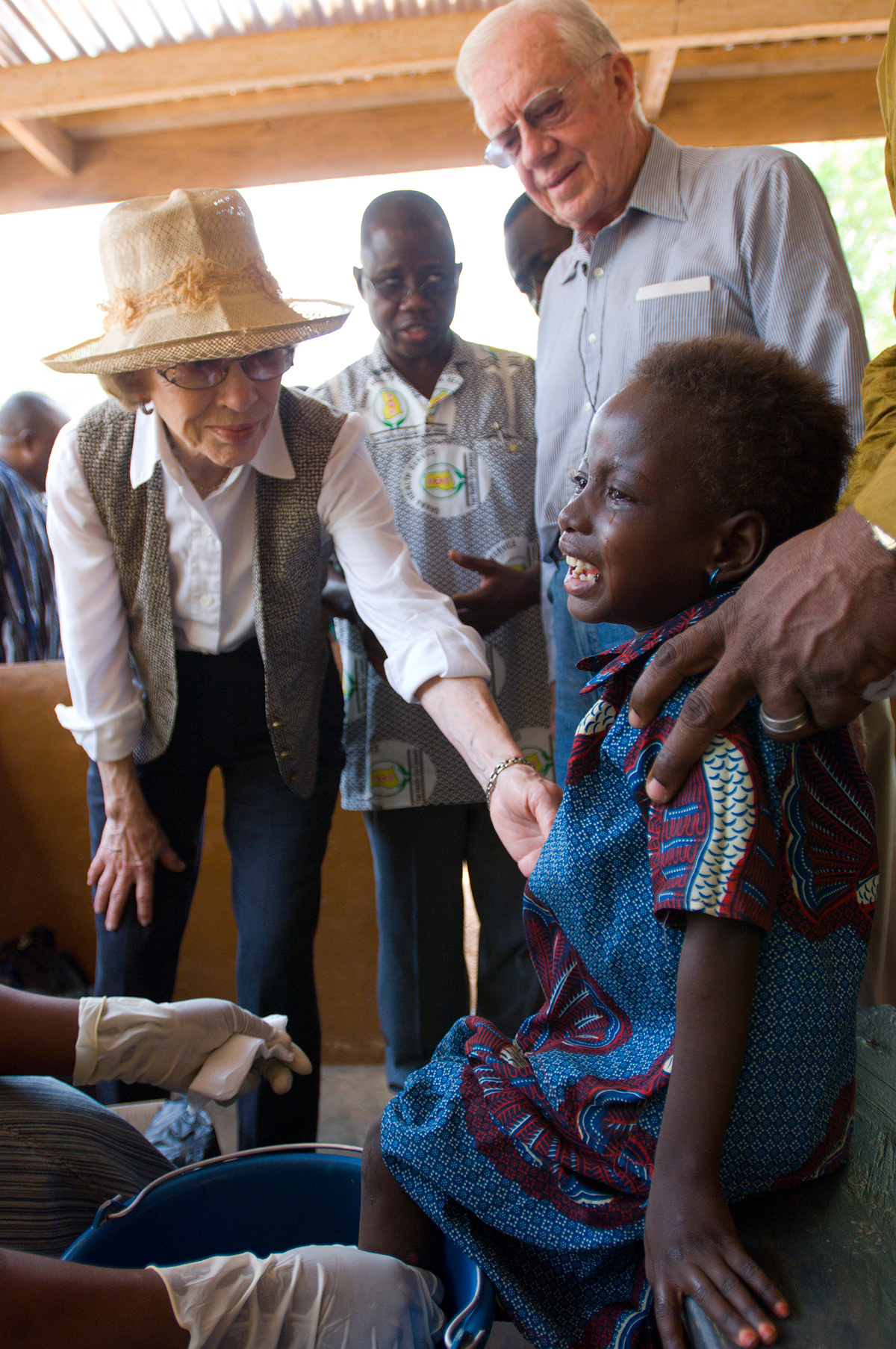
- Four-year-old Rafia Fusseini receives treatment for Guinea worm at a hospital in Savelugu, Ghana. When The Carter Center began working on eradication in 1986, Ghana ranked second in the world in Guinea worm cases. In 2010, Ghana recorded its last case of the disease. © The Carter Center/L. Gubb
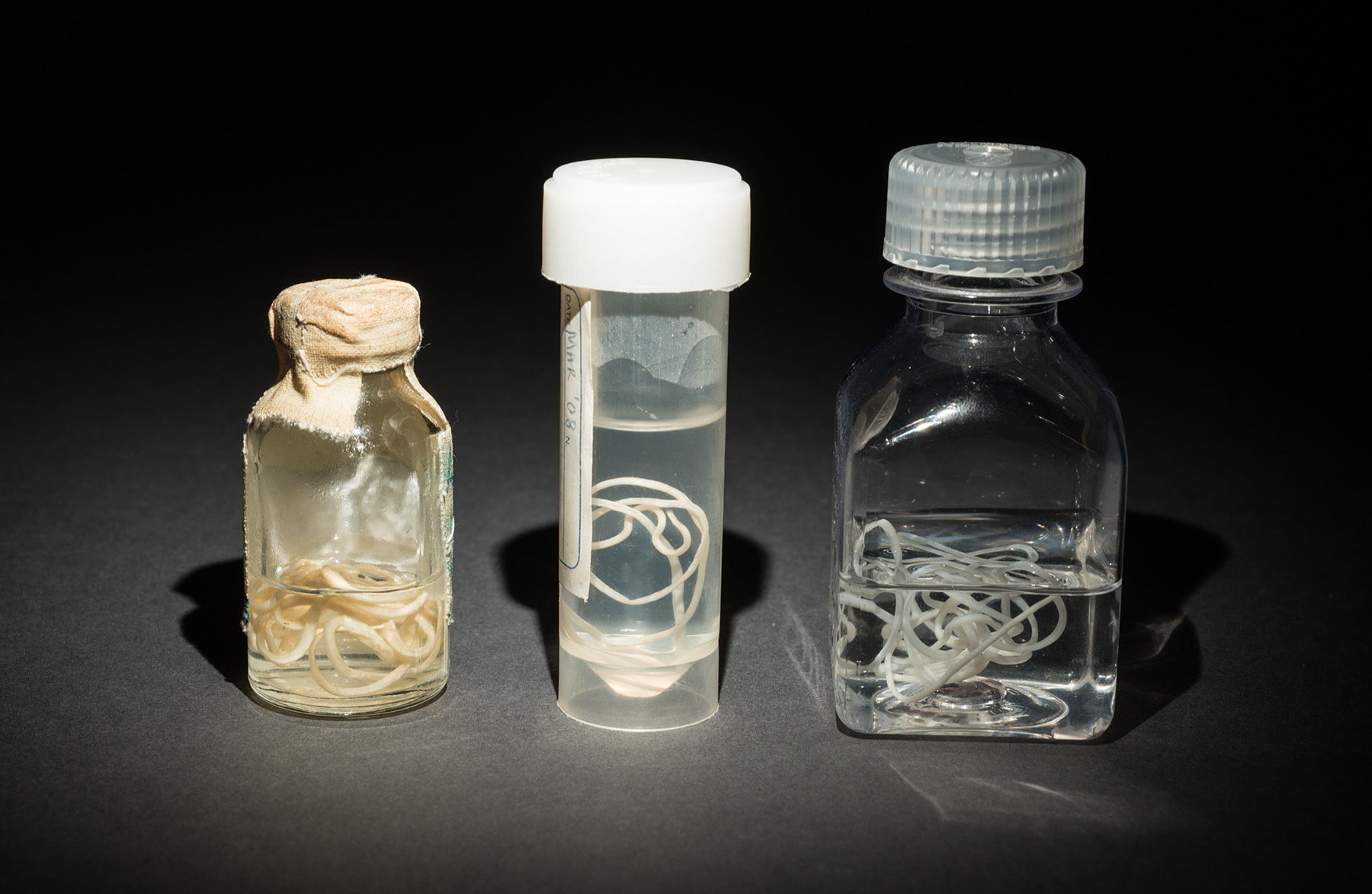
- The Guinea worm (Dracunculus medinensis) is a type of nematode or roundworm. The samples here were drawn out of patients in Africa and saved for the purposes of research. These worms are dead and are therefore no longer infectious. Once eradication is complete, the Guinea worms will be extinct. © AMNH/D. Finnin
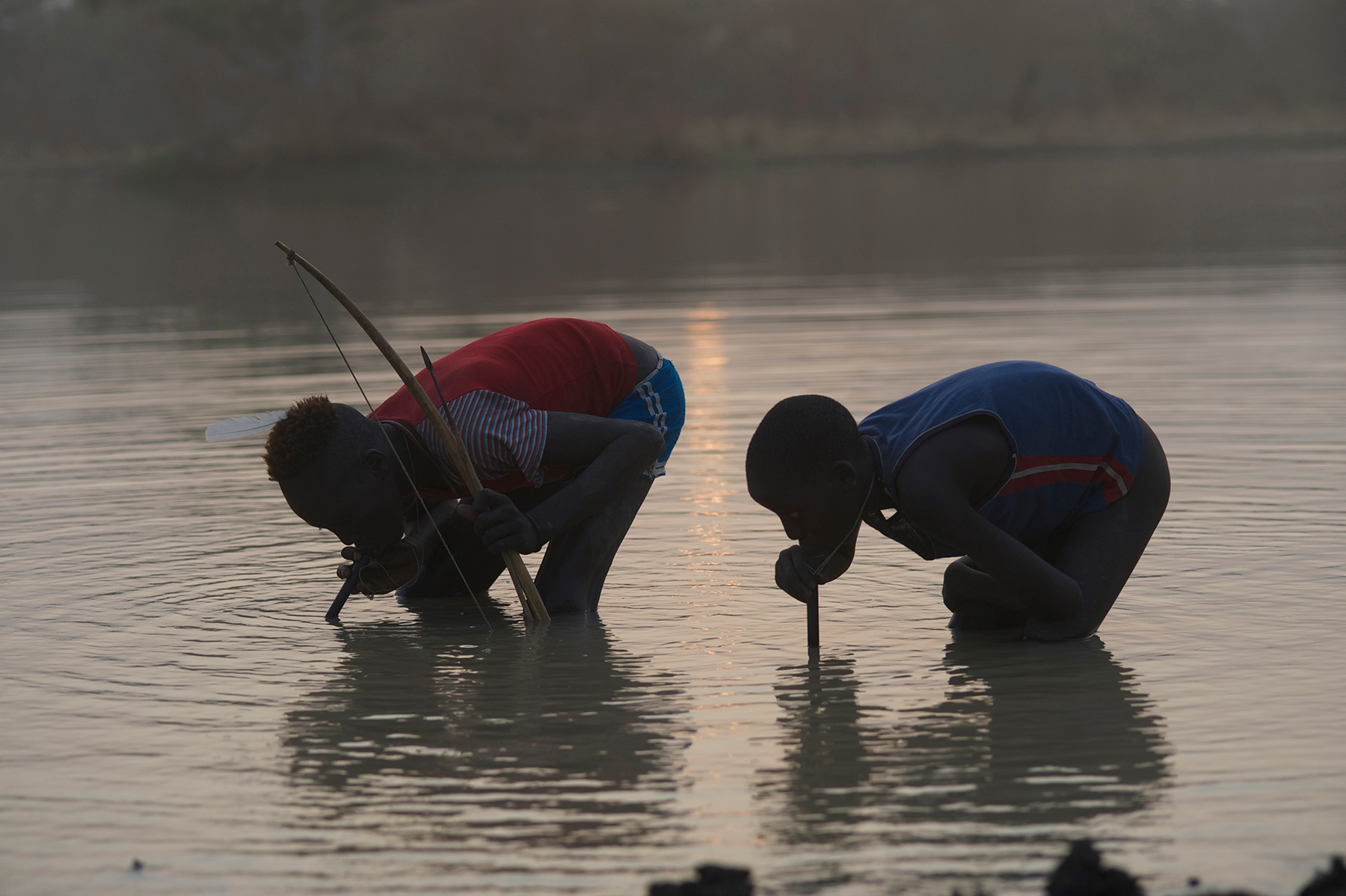
- A small piece of steel mesh inside a plastic drinking tube offers a low-tech way to filter water on the go, preventing the small crustaceans that carry Guinea worm larvae from being consumed. The Carter Center has collaborated with national governments, local volunteers, and other organizations to distribute more than 23 million of these free “pipe filters.” © The Carter Center/L. Gubb

- Guinea worm disease is spread through water by small crustaceans that carry Guinea worm larvae, which thrive in stagnant ponds and lakes that provide drinking water in many communities. Filtering water through a simple mesh fabric removes the crustaceans, rendering the water Guinea-worm free. Nomads in West Africa found they could create a portable filter by fastening nylon fabric to the end of a reed used as a drinking straw. Plastic versions have since been distributed by the millions, and it is now considered disgraceful to be found without a pipe filter in many communities. Locals often decorate the strings with traditional beaded designs. © AMNH/D. Finnin
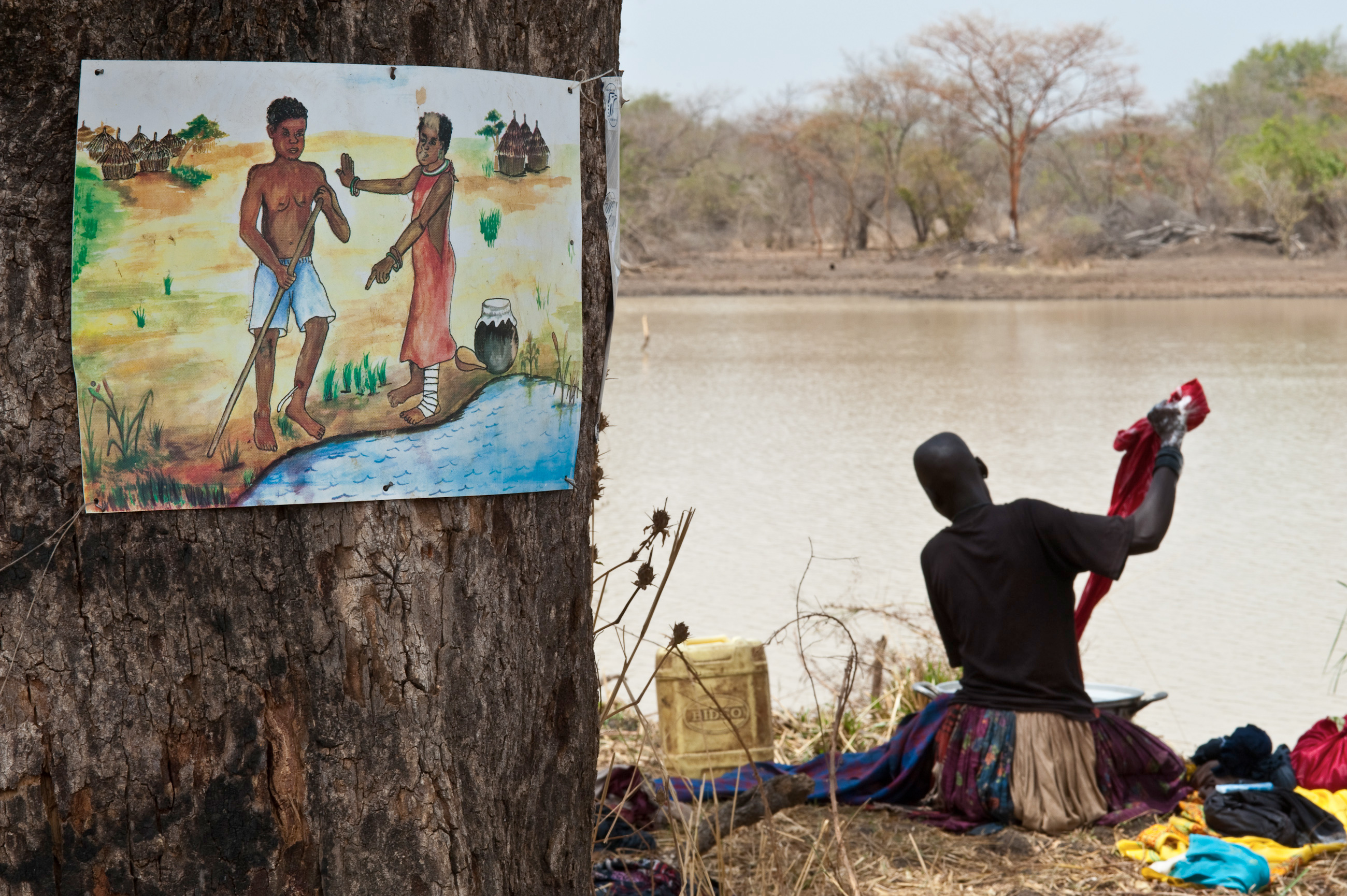
- A woman does her washing near a dam in the country now known as South Sudan. Nearby, a sign cautions against entering the water while infected with Guinea worm. © The Carter Center/L. Gubb

- An educational comic book captures the attention
of Guinea worm patients Sadia Mesuna (right) and Fatawu Yakubu at a case containment center in Ghana. © The Carter Center/L. Gubb
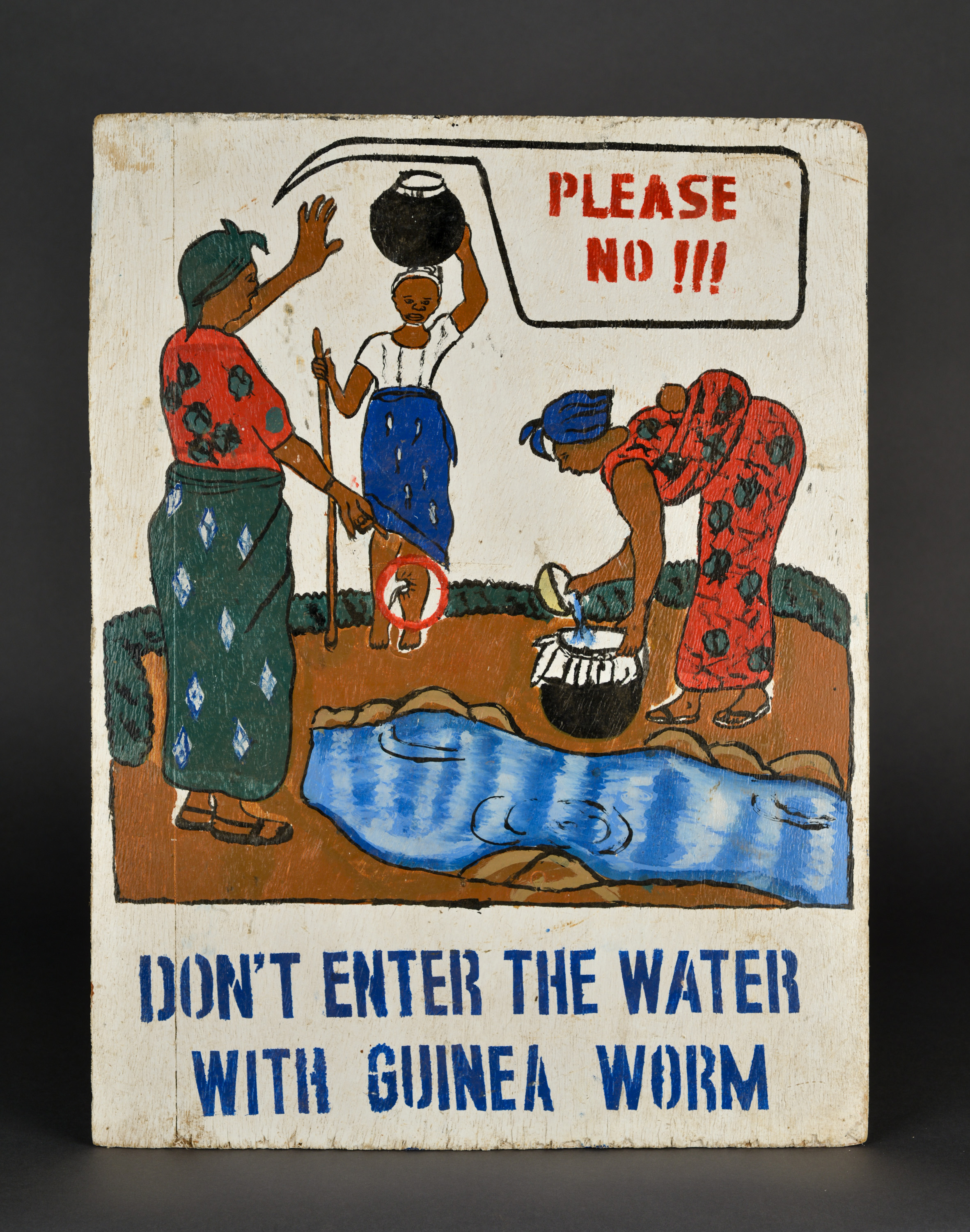
- This sign was posted near a pond in Ghana. Flip books, painted signs, and wall murals have helped encourage safe practices and interventions—especially in areas where few people can read. © AMNH/D. Finnin
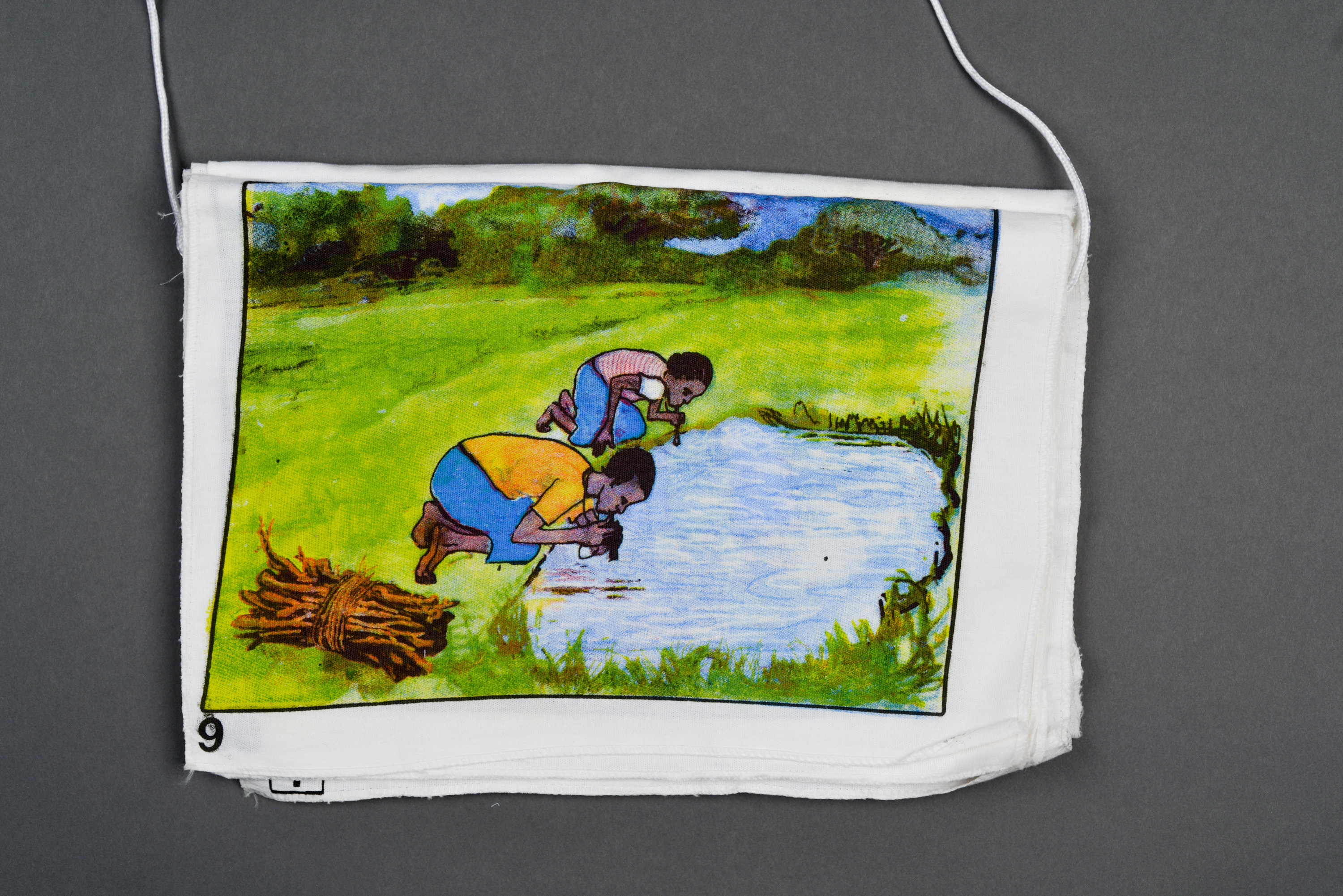
- A flip book illustrating proper filtering techniques and other healthy practices is part of every village volunteer’s arsenal of educational tools. Cloth replaced paper and cardboard books early in the campaign, when it became clear that paper couldn’t stand up to typical field conditions. © AMNH/D. Finnin
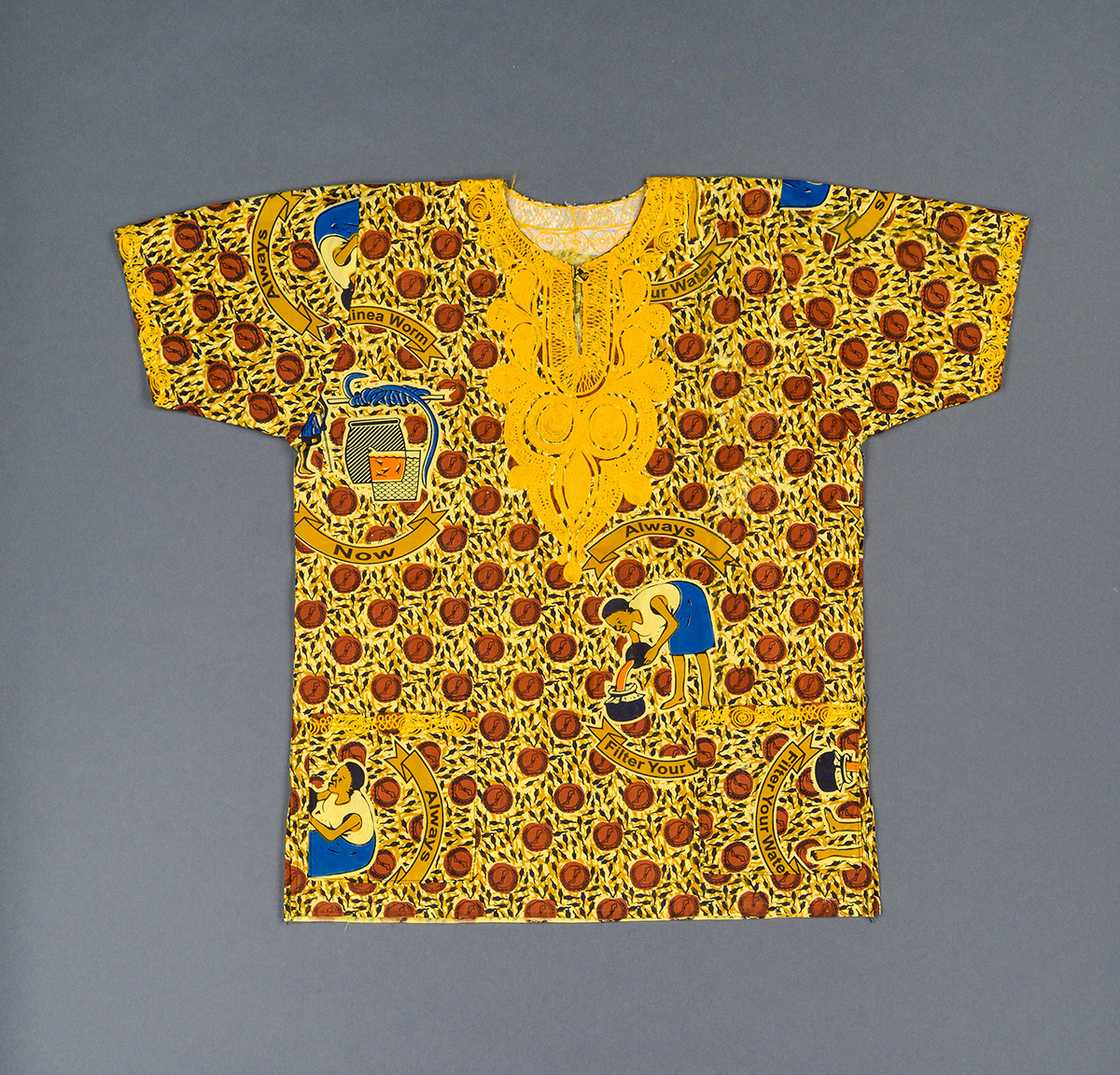
- In 1991, The Carter Center commissioned a decorative textile to highlight the work of the Guinea worm campaign in Africa. The fabric was given as a show of appreciation to village volunteers, and clothing made from it helped publicize the campaign’s goals. Soon, many national Guinea worm programs were creating their own textiles, adapting the original designs and motifs into unique “Guinea worm country cloths.” © AMNH/D. Finnin
Exhibition Information
Countdown to Zero: Defeating Disease at the American Museum of Natural History is curated by Mark Siddall, curator in the Museum’s Sackler Institute for Comparative Genomics, in collaboration with Carter Center Vice President for Health Programs, Dr. Donald Hopkins.
Dates: Jan. 13 – July 12, 2015
Related Resources
Learn more about this exhibit: Countdown to Zero: Defeating Disease »
Watch the video: Countdown to Zero: A Case Study in South Sudan »








